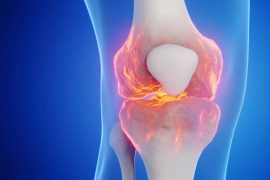During the Covid-19 lockdowns, many people transitioned to remote work, leading to a significant shift in how home office setups were designed. The inclusion of standing desks and ergonomic chairs became essential components in creating ideal work environments that catered to the sedentary nature of remote work. Even as restrictions lifted and employees returned to physical workplaces, standing desks continued to be promoted as a healthier alternative to traditional seated workstations. This change aimed to foster a more health-conscious and adaptable approach to productivity, with the belief that standing desks could enhance work performance and promote ergonomic mindfulness.
The Health Risks of Standing Desks
However, recent research from the University of Sydney challenges the assumption that standing desks are inherently beneficial for health. A study published in the International Journal of Epidemiology analyzed data from 83,013 adults in the UK Biobank health records and found that standing for more than two hours a day could increase the risk of health issues, such as deep vein thrombosis and varicose veins. The study revealed that standing did not significantly reduce the risk of diseases like stroke and heart failure, contradicting the widely held belief that it might.
Dr. Matthew Ahmadi, one of the study’s authors, emphasized that prolonged standing does not counteract the negative effects of a sedentary lifestyle and can pose risks for circulatory health. He highlighted the importance of integrating regular movement throughout the day, regardless of whether one is sitting or standing.
Recommendations for a Healthier Work Environment
Prof. Emmanuel Stamatakis, Director of the Mackenzie Wearables Research Hub at the University of Sydney, suggested that for individuals who typically sit for extended periods, incorporating incidental movement and structured exercise may be a more effective strategy for mitigating cardiovascular disease risk. He recommended taking regular breaks, walking during meetings, using stairs, and utilizing lunch breaks to engage in physical activity.
Emily McGrath, Senior Cardiac Nurse at the British Heart Foundation, reinforced the findings by stating that avoiding prolonged periods of inactivity is crucial for long-term health. Although the study found no direct association between standing and increased cardiovascular disease risk, it did highlight potential circulatory health implications. The researchers discovered that for every additional 30 minutes spent standing beyond the recommended two hours, the risk of circulatory disease increased by 11%. Overall, the study concluded that standing alone does not suffice as a preventive measure against heart conditions, emphasizing the necessity of active movement throughout the workday.
Disclaimer:
The information contained in this article is for educational and informational purposes only and is not intended as a health advice. We would ask you to consult a qualified professional or medical expert to gain additional knowledge before you choose to consume any product or perform any exercise.







